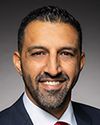I believe that some goods should be shipped by pipeline, because doing that is way safer than shipping by rail. Some things should be shipped by rail, and I would also suggest to you that the majority of things we ship are shipped by truck. The estimates are that shipping something by rail is 250 times more efficient and less carbon intensive than shipping something by truck. We need to create an apples-to-apples comparison to determine which is a more dangerous mode.
The problem with rail is that it's a point source of pollution. It's like when a plane goes down. That makes international news, but we know that people die in car crashes way more often. No one gets freaked out about stepping into a car, but everyone has angst about stepping into a plane even though it's a much safer thing. Exactly the same analogy can be drawn about rail.
We should absolutely be shipping things in the safest way possible, and we should also be wending our concepts of safety into climate. For the foreseeable future, until we reach a low-carbon or a zero-carbon environment decades in the future, we will be shipping energy products that are carbon intensive, and we should do that in the least carbon-intensive and safest way possible.
If you're asking me as a Calgarian, and a Calgarian who is very environmentally forward, to talk about shipping, I think that shipping by rail, in terms of chemical products and petroleum and gas, is definitely—






